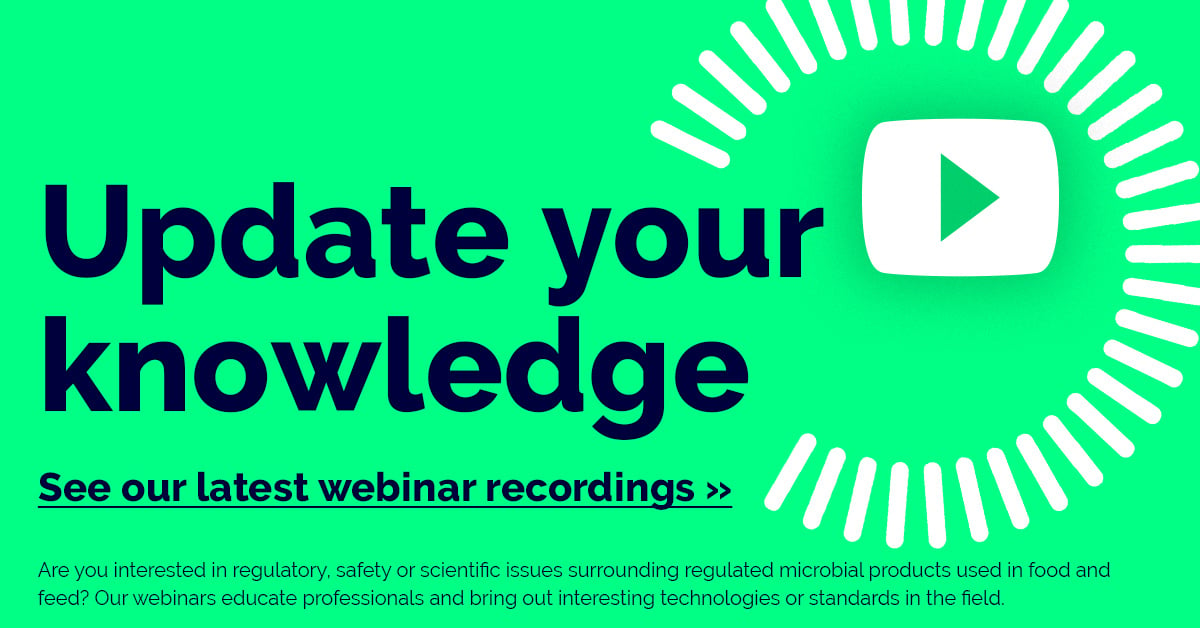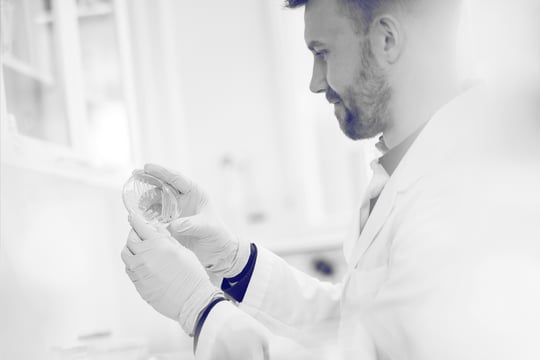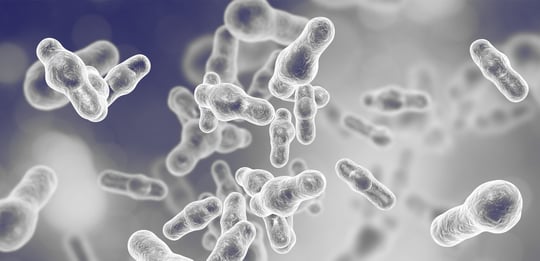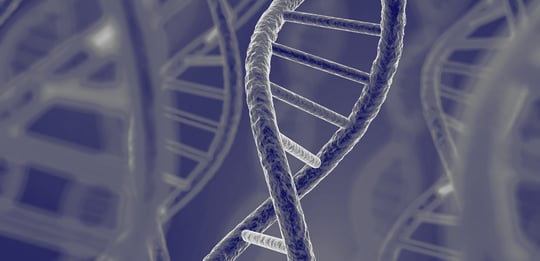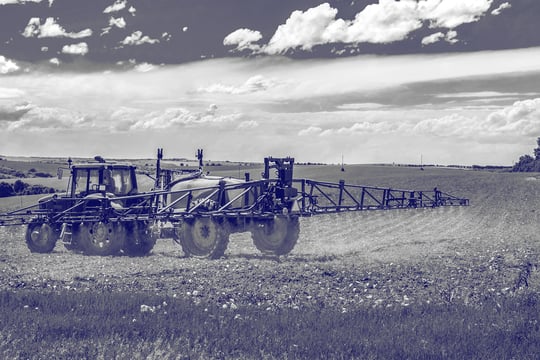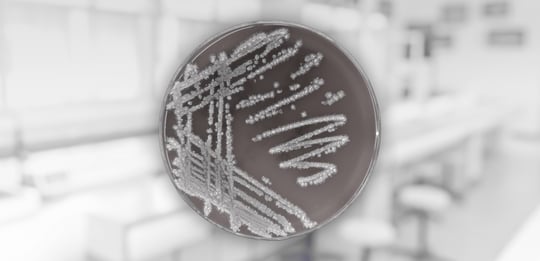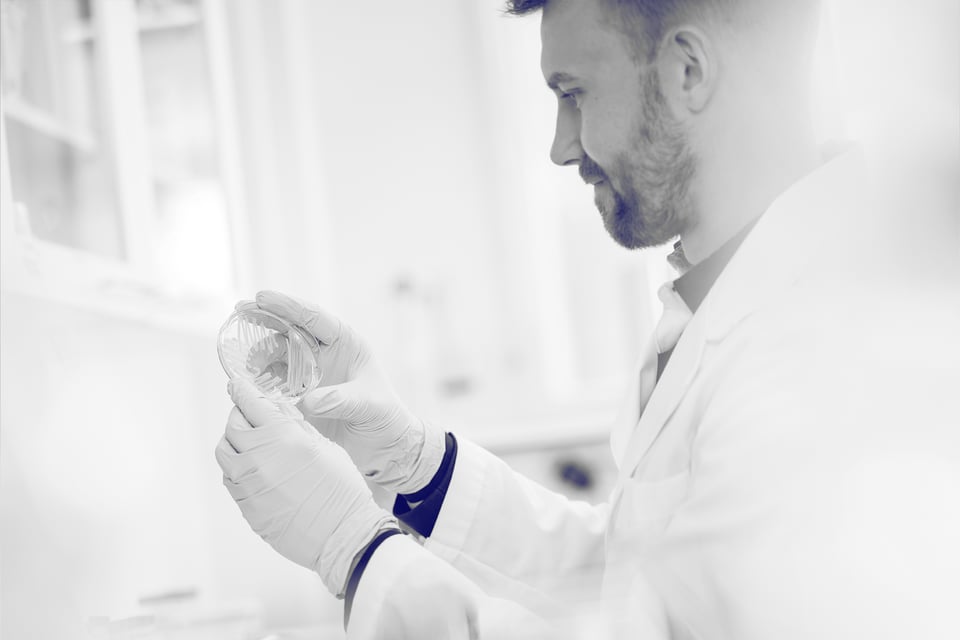
Every day, we come into contact with microorganisms. While many are harmless, a few can invade our bodies causing severe illness or contamination. Yet while some make us ill and others can be a nuisance by spoiling our food, without microbes, there would be no bread, cheese, beer or chocolate. The feed our farm animals eat also have microbial additives in it. Friend or foe – food microbes are always on the menu.
Quick links to content:
- What is microbial testing?
- Microorganisms presumed safe in Europe
- Microbial testing to identify microbes
- Microbial testing to analyse toxicity
- Microbial testing of animal feed additives
- Testing for the market launch of fermentation products
- Latest additions to Biosafe’s toolbox
- A microbial testing laboratory of the highest standard
- Our latest webinars
What is microbial testing?
Microbial testing is necessary and required by many industries worldwide, where human health is at risk of being adversely affected by disease-causing bacteria and viruses, and microbial toxins. Microbiological analysis of food or feed products is the use of biological, biochemical, molecular or chemical methods for the detection, identification or enumeration of microorganisms in foods or animal feeds.
Food businesses use microbiological criteria in their food safety management systems based on HACCP (Hazard Analysis and Critical Control Points) principles. HACCP is a standardised, international, seven-step preventive approach to food safety.
Extensive safety testing is required from regulated products in the food chain, i.e. food and feed additives, enzymes, novel foods and plant protection products. When microorganisms are consumed as food or feed, are used to produce food, pre-market authorization requires the safety of the microorganism to be established.
Biosafe focuses on the microbiological risk assessment of regulated products in the food chain.
Microorganisms presumed safe in Europe
QPS or Qualified Presumption of Safety was developed by the European Commission together with its scientific committees on animal nutrition, food and plants to facilitate the safety evaluation of microorganisms intentionally introduced into the food chain. Our professor Sirpa Kärenlampi has a first-hand account of why and how QPS was developed.
QPS greatly reduces the number of studies required for an adequate safety assessment of a microorganism. If you use a microorganism in your studies that is "qualified presumed safe", then tolerance studies in target animals, studies on consumer and environmental safety and genotoxicity and subchronic toxicity studies are not required.
When EFSA receives an application for market authorisation that requires a safety assessment, a QPS assessment is done on the microorganisms. EFSA then updates their list of QPS-recommended biological agents intentionally added to food or feed. It is currently not possible to apply for a QPS status for a microorganism without submitting a full application dossier.
EFSA also carries out an extensive literature search every six months to ensure that the list is up to date. As an example, taxonomic changes are reflected in the assessment. Strains of Bacillus paralicheniformis, previously grouped with Bacillus licheniformis, are able to produce bacitracin. The QPS status was recommended with the qualifications ‘absence of toxigenic activity’ and ‘absence of genetic information to synthesize bacitracin.
Microbial testing to identify microbes
There are several completely different groups of microorganisms, which may exist in single-celled form or as a colony of cells. The main types are bacteria, archaebacteria, fungi (yeasts and moulds) and protists (like algae, amoebas and slime moulds). Sometimes viruses are included, which do not have a cell structure, so they are in the grey area.
Although the species of a microorganism already reveals much about its safety, a safety assessment is always done at the strain level. Then, a fundamental question to start with, is what is a bacterial strain? We had our own discussion on the topic with our professors. Bacteria and yeasts evolve all the time and mutations occur naturally over generations. Mutations can in some cases create distinctive strains too. The discussion was related to the PFGE microbial testing method (pulsed-field gel electrophoresis), which we use to produce a DNA fingerprint for a bacterial isolate thereby identifying bacterial strains from feed samples.
Bioinformatics
Bioinformatics is a subdiscipline of biology and computer science concerned with the acquisition, storage, analysis, and dissemination of biological data, most often DNA and amino acid sequences.
When microorganisms are used in the food chain or as biopharmaceuticals, their safety has to be assessed with a bioinformatic analysis of the whole genome sequence of bacteria and yeasts.
Bioinformatics services at Biosafe provide genome-based safety assessments of microorganisms.
Microbial DNA isolation
Whole genome sequencing starts with DNA isolation. For particularly difficult strains, our microbial testing laboratory can isolate DNA for whole genome sequencing. The samples we handle are typically used in industrial applications for fermentation, and the strains are very versatile. Some of them even represent new species that have not been characterised previously. Read more about Microbial DNA isolation.
Whole Genome Sequencing
The genome, or genetic material, of an organism (bacteria, virus, potato, human) is made up of DNA. Each organism has a unique DNA sequence, which is composed of bases (A, T, C, and G). If you know the sequence of the bases in an organism, you have identified its unique DNA fingerprint or pattern. Determining the order of bases is called sequencing. Whole genome sequencing is a laboratory procedure that determines the order of bases in the genome of an organism in one process.
Microorganism strains used as such or as production organisms in food or feed require safety assessment and pre-market authorisation. Whole Genome Sequencing (WGS) provides tools for strain characterisation, including taxonomic identification and characterisation of potential traits of concern. With WGS you can detect single nucleotide variants, insertions/deletions, copy number changes, and large structural variants in the DNA of the microbe. WGS has been EFSA's requirement for strain characterisation since 2018. The requirement to sequence whole genomes was subsequently extended to food enzymes and other regulated products in the food chain.
Biosafe offers several genome sequencing and bioinformatics analysis services. See them here.
Bioinformatic analysis outperforms all other means of identifying a microorganism, and there are several methods based on genome sequences. It is advisable to take your time and identify each strain properly to avoid problems at a later stage. Biosafe uses several methods and in most cases unequivocal identification at the species level is possible.
Microbial testing to analyse toxicity
Pathogens, virulence, allergenicity and cytotoxicity
Microbes that cause disease are called pathogens. Pathogenic microbes have the potential ability to produce disease, whereas virulence is the disease-producing power of an organism, i.e. the degree of pathogenicity within a group or species.
There are no unified agreements on how to identify pathogens and virulence. The possible toxicity of a microbial strain is usually assessed based on a literature search and on the whole genome sequence. The presence of genes that encode virulence factors may trigger further phenotypic testing.
The foodborne pathogens of most concern in the EU are: Salmonella, Campylobacter, verotoxigenic Escherichia coli (VTEC), Listeria monocytogenes, and parasites such as Cryptosporidium, Echinococcus granulosus/multilocularis and Trichinella spiralis. Some of these species are, however, intentionally added into the food chain, such as E. coli. Only safe strains are authorized.
Allergenicity
Allergenicity refers to the ability of an antigen to induce an abnormal immune response, which is an overreaction and different from a normal immune response in that it does not result in a protective/prophylaxis effect but instead causes physiological function disorder or tissue damage. Potential allergenicity is one key aspect in the safety assessment of enzymes and other proteins. The assessment is a stepwise process, in which a bioinformatic analysis is usually the first screening step. Biosafe uses several databases, compares the results, and carefully assesses the outcome.
Cytotoxicity
Whilst toxicity is a more general term for how harmful a substance is to an organism; cytotoxicity is the term for how toxic a substance is to cells. A cytotoxic compound can cause cell damage or death, either through necrosis or apoptosis. For Bacillus species, a specific cytotoxicity test is performed as one of the qualifications of the QPS approach. Read more on our cytotoxicity tests here.
WGS for identifying safety risks
Whole Genome Sequencing can highlight several risks.
When a living organism like a microbe produces specific molecular end-products, it does it in a sequence of enzymatic steps. These sequences are called biosynthetic pathways. The pathways in the organism's metabolic processes can end up more than you asked for. These byproducts are called secondary metabolites, some of which are hazardous.
If the safety of a microorganism can’t be established by other means, a basic set of toxicity studies should be provided consisting of genotoxicity/mutagenicity tests and a subchronic (90-day) oral toxicity study.
For example, with filamentous fungi, there is often a significantly more complex secondary metabolism.
Filamentous Fungi and anaerobes
Fungi, the workhorses of biotechnology, are perhaps the least understood of the multicellular organisms, despite being almost ubiquitous in nature. Filamentous fungi (named because they are composed of a web of filaments called ‘hyphae’) are critical to the production of many commercial enzymes and organic compounds. Alongside anaerobic bacteria (which don't require oxygen to function), they are the main agents responsible for decomposing dead organic matter, making its chemical components available to the next generation of organisms.
Microbial testing with filamentous fungi and anaerobes is becoming ever more prevalent in the food industry, especially in enzyme production. We have invested in facilities to test fungi and anaerobes in our laboratory too. Secondary metabolite analysis of filamentous fungi which have significantly more complex secondary metabolism than bacteria, and microorganisms used for plant protection, is of particular interest. The EC guidance SANCO/2020/12258 introduced a “step-by-step” procedure for their assessment. Some metabolites produced by microorganisms may have toxicological significance, while others may be involved in the mode of action of the plant protection product. Biosafe helps companies understand, categorise and assess the safety of the various metabolites potentially produced by strains used for plant protection.
Microbial testing of animal feed additives
In addition to food, there are many regulations for animal feed and the additives that go into animal feed since they are part of the food chain. Some of the most commonly used feed additives in animal rations include enzymes, probiotics and prebiotics, antioxidants, antibiotic growth promoters, and colouring agents.
Compared to food testing, there is an additional requirement for additives that go into animal feed if they are to be registered as allowed feed additives in the European Union. A feed additive must be assessed for efficacy, meaning how well it demonstrates a health benefit over a placebo. These benefits can be a decreased risk of contamination (e.g. from E. coli), helping the digestion of the feed or absorption of feed nutrients, or how well the animals grow, and stay healthy and productive overall.
Efficacy can be assessed by means of in vitro studies, which don't require animals, for technological feed additives i.e. those additives, which are intended to affect only the characteristics of feed. Read more on testing for efficacy.
Feed additives may be used as preservatives to control pathogen growth in the feed matrix. Biosafe offers in vitro studies to prove the efficacy of these technological additives. In addition, Biosafe is performing tests to determine if a microbial feed additive is compatible with other additives, such as coccidiostats (antiprotozoal agents that act upon Coccidia parasites, regulated as feed additives).
Testing for the market launch of fermentation products
For the food and agriculture industry, securing timely approvals for food and feed products is power. Hitting a certain window for market launch can be the difference between success and failure.
The most critical barrier to being accepted in the EU market is the safety analysis of microbial products, such as novel foods or feed additives.
Fermentation products
Live microbial strains, yeasts and moulds are used as production hosts to produce outputs, which can be called microbial products. These products are often produced by fermentation. Microbial products may consist of the organisms themselves and/or the metabolites or other molecules they produce. In addition to identifying microbes, their products must be verified too.
A safety analysis includes strain investigation (to identify the species and potential genes of concern in the microbial strain) and product investigation (to identify and assess risks in the products). Products might include amino acids, vitamins, enzymes or other molecules. Sometimes they include heavy metals, toxins, antibiotics, viable cells of the production strain etc, which must all be tested for.
The presence of viable production strains is tested by cultivating the product in a Petri dish, for example, and then observed for any colonies. If the production strain is genetically modified, the DNA originating from it must be analysed in the product.
Microbial products that are under scrutiny in the EU
In addition to toxins, which of course aren’t allowed, in the European Union genetically modified microorganisms (GMMs) have to be clearly branded as such on product packaging. To avoid GMO branding in foods, feed additives or food enzymes in the EU, fermentation products must be free from production strain DNA if the strain is genetically modified. We test for these with a PCR test.
The end-product should not add to the pool of antimicrobial resistance (AMR) genes already present in the gut microbial population, or increase the spread of AMR. We test these with an antimicrobial susceptibility test to find the minimum inhibitory concentration (MIC), which is the lowest antimicrobial concentration, which prevents the growth of the target microorganism.
Latest additions to Biosafe’s toolbox
Biosafe recently launched new services to make your path to new food and feed solutions safer and more effortless:
1. Extensive literature searches – a systematic and documented way to provide information on the safety of a microorganism or product under authorised conditions of use,
2. Biogenic amine analysis – a bioinformatic and in vitro analysis of pathogenic amino acid derivatives formed during fermentation and decomposition, and
3. Quantitative PCR – an accurate and relatively quick way of verifying the viable cell counts in a product, for example enumerating the probiotic strains in a product.
A microbial testing laboratory of the highest standard
Biosafe is an ISO 17025 accredited laboratory. The ISO 17025 is the most important standard for microbial testing laboratories. It verifies that a laboratory is competent, reliable and credible without a doubt and obtained results are consistently accurate. Biosafe's ISO 17205 laboratory accreditation covers antimicrobial susceptibility testing like Minimum Inhibitory Concentration (MIC) tests.
Ensuring quality involves the management, skills of the staff, the methods used, the equipment required, the operating culture and the working conditions. Our laboratory and quality managers wrote about what ISO 17025 really means for us internally (and about their own experience) and for you as a customer.
Read more about our ISO 17025 accreditation.
Standard operating procedures (SOPs) for microbiological laboratories
The Biosafe laboratory operates from our headquarters in Kuopio, in the lake district of Finland. The laboratory receives a number of parcels containing microbial testing samples from different customers every week. That's why it's of utmost importance to have Standard Operating Procedures in our microbiology lab. The samples are handled by our laboratory technicians, two of whom we interviewed about their work.
The list of procedures includes several factors, which, along with our ISO 17025 accreditation, ensure that microbial testing results are reliable and accurate. The procedures that are observed for quality include:
-
Choice of methods
-
Staff competence
-
Available resources
-
Working equipment
-
Laboratory environment suitability
-
Sample recording
-
Impartiality
-
Data security
Our next development will focus on the strategic growth of our microbial testing and food safety services.
Contact our experts!
|
|
|

See the webinar recording:
Registering a microbial product as a food or feed — which one should you go with?
Biosafe is often asked what would be the best way to go to market with your microbial procuct. In this webinar we will browse through different options as food and animal feed in the EU and main differences between them. Special focus is on microbial biomasses.
By filling out the form, you can view the recording.





